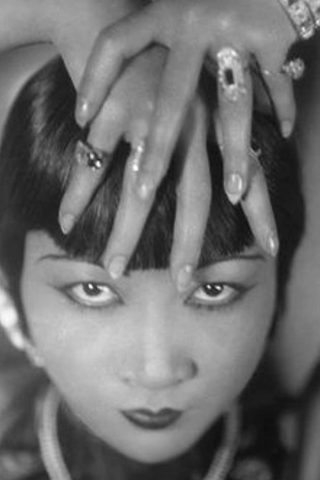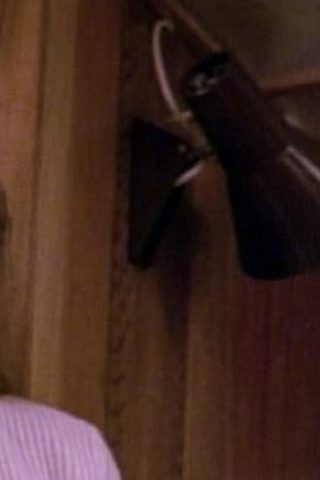
| Name | Anna May Wong |
| Phone |  |
| Email ID |  |
| Address |  |
| Click here to view this information |
Anna May Wong, the first Chinese-American movie star, was born Wong Liu Tsong on January 3, 1905, in Los Angeles, California, to laundryman Wong Sam Sing and his wife, Lee Gon Toy. A third-generation American, she managed to have a substantial acting career during a deeply racist time when the taboo against miscegenation meant that Caucasian actresses were cast as “Oriental” women in lead parts opposite Caucasian leading men. Even when the role called for playing opposite a Caucasian in Asian drag, as with Paul Muni’s as the Chinese peasant Wang Lung in The Good Earth (1937), Wong was rejected, since she did not fit a Caucasian’s imagined ideal look for an Asian woman. The discrimination she faced in the domestic industry caused her to go to Europe for work in English and German films. Her name, which she also spelled Wong Lew Song, translates literally as “Frosted Yellow Willows” but has been interpreted as “Second-Daughter Yellow Butterfly.” Her family gave her the English-language name Anna May. She was born on Flower Street in downtown Los Angeles in an integrated neighborhood dominated by Irish and Germans, one block from Chinatown, where her father ran the Sam Kee Laundry.
The Wong family moved back to Chinatown two years after Liu Tsong’s birth, but in 1910 they uprooted themselves, moving to a nearby Figueroa Street neighborhood where they had Mexican and East European neighbors. There were two steep hills between the Wongs’ new home and Chinatown, but as her biographer, Colgate University history professor Graham Russell Gao Hodges, points out, those hills put a psychological as well as physical distance between Liu Tsong and Chinatown. Los Angeles’ Chinatown already was teeming with movie shoots when she was a girl. She would haunt the neighborhood nickelodeons, having become enraptured with the early “flickers.” Though her traditional father strongly disapproved of his daughter’s cinephilia, as it deflected her from scholastic pursuits, there was little he could do about it, as Liu was determined to be an actress. The film industry was in the midst of relocating from the East Coast to the West, and Hollywood was booming. Liu Tsong would haunt movie shoots as she had earlier haunted the nickelodeons. Her favorite stars were Pearl White, of The Perils of Pauline (1914) serial fame, and White’s leading man, Crane Wilbur. She was also fond of Ruth Roland.
Educated at a Chinese-language school in Chinatown, she would skip school to watch film shoots in her neighborhood. She made tip money from delivering laundry for her father, which she spent on going to the movies. Her father, if he discovered she had gone to the movies during school hours, would spank her with a bamboo stick. Around the time she was nine years old, she began begging filmmakers for parts, behavior that got her dubbed “C.C.C.” for “curious Chinese child.”
Liu Tsong’s first film role was as an uncredited extra in Metro Pictures’ The Red Lantern (1919), starring Alla Nazimova as a Eurasian woman who falls in love with an American missionary. The film included scenes shot in Chinatown. The part was obtained for her by a friend of her father’s (without his knowledge) who worked in the movie industry. Retaining the family surname “Wong” and the English-language “Christian” name bestowed on her by her parents, Liu Tsong Americanized herself as “Anna May Wong” for the movie industry, though she would not receive an on-screen credit for another two years.
The rechristened Anna May Wong appeared in bit parts in movies starring Priscilla Dean, Colleen Moore and the Japanese-born Sessue Hayakawa, the first Asian star of American movies. Due to her father’s demands, she had an adult guardian at the studio, and would be locked in her dressing room between scenes if she was the only Asian in the cast. Initially balancing school work and her budding film career, she eventually dropped out of Los Angeles High School to pursue acting full time. She was aided by the fact that, though still a teenager, she looked more mature than her real age.
Director Marshall Neilan cast the teenage Anna May in a bit part in his film Dinty (1920), then gave her her first credited role in the “Hop” sequence of Bits of Life (1921), the American movie industry’s first anthology film. In “Hop” Wong played Toy Ling, the abused wife of Lon Chaney’s character Chin Gow, which the Man of a Thousand Faces played in Chinese drag. She next appeared in support of John Gilbert in Fox’s Shame (1921) before being cast in her first major role at the age of 17, the lead in The Toll of the Sea (1922). She played Lotus Flower in this adaptation of the opera “Madame Butterfly,” which moved the action from Japan to China. “The Toll of the Sea” was the first feature film shot entirely in Technicolor’s two-strip color process. By appearing top-billed in this romantic melodrama, Anna became the first native-born Asian performer to star in a major Hollywood movie. Most portrayals of Asian women were done by Caucasian actresses in “yellow-face,” such as the 1915 Madame Butterfly (1915) starring “America’s Sweetheart” Mary Pickford (who was born in Toronto, Canada) in the title role. In “The Toll of the Sea,” Anna May’s character perpetuates the stereotype of the Asian “lotus blossom,” a self-sacrificial woman who surrenders her life for the love of a Caucasian man. The film was a hit, and it showcased Wong in a preternaturally mature and restrained performance. This breakthrough should have launched Anna May Wong as a star, but for one thing: She was Chinese in a country that excluded (by law) Chinese from emigrating to the US, that forbade (by law) Chinese from marrying Caucasians and that generally excluded (by law or otherwise) Chinese from the culture at large, except for bit roles as heavies in the national consciousness.
“The Toll of the Sea” made Anna May Wong a known, and thus a marketable, commodity in Hollywood. She became the #1 actress when a young Asian female part had to be cast, but unfortunately lead roles for Asians were few and far between. Instead of becoming a star, this beautiful woman with a complexion described as “a rose blushing through old ivory” continued to be stuck in supporting roles, as in Tod Browning’s melodrama Drifting (1923) and the western Thundering Dawn (1923). She even played an Eskimo in The Alaskan (1924). She appeared as Tiger Lily, “Chieftainess of the Indians,” in Paramount’s prestigious production of J.M. Barrie’s Peter Pan (1924), but the role was very small (the film was shot on Santa Catalina Island, where the cast stayed during the production.
The 170-cm-tall (5’7″, although other sources cite her height as 5’4½”) beauty was known as the world’s best-dressed woman and widely considered to have the loveliest hands in the cinema. Her big breakthrough after her auspicious start with “The Toll of the Sea” finally came when Douglas Fairbanks cast her in a supporting role as a treacherous Mongol slave in his Middle Eastern/Arabian Nights extravaganza The Thief of Bagdad (1924). The $2-million blockbuster production made her known to critics and the movie-going public. For better or worse, a star, albeit of the stereotypical “Dragon Lady” type, was born.
Despite her waxing fame, she was limited to supporting roles, as Caucasian actresses, including most improbably Myrna Loy, continued to be cast as Asian women in lead roles from the 1920s through the 1940s, despite the ready availability of Anna May Wong. She was unable to attract lead parts despite her beauty and proven acting talent, even in films featuring Asian women, but she did carve out a career as a supporting player in everything from A-list movies to two-reel comedies and serials. The characters she played typically were duplicitous or murderous vamps who often reaped the wages of their sin by being raped. It was a demeaning apprenticeship that most Caucasian actresses did not have to go through. Anna wanted was to play modern American women all through her career but was thwarted because of racism. Later, when she journeyed to Europe to escape the typecasting of Hollywood, she told journalist Doris Mackie, “I was so tired of the parts I had to play. Why is it that the screen Chinese is always the villain? And so crude a villain–murderous, treacherous, a snake in the grass.”
Wong embodied the Caucasian ideal of a foreign exotic beauty, an alien presence despite her American citizenship. The movie magazine “Pictures” published a memoir of hers in 1926 in which she complained, “A lot of people, when they first meet me, are surprised that I speak and write English without difficulty. But why shouldn’t I? I was born right here in Los Angeles and went to the public schools here. I speak English without any accent at all. But my parents complain that the same cannot be said of my Chinese. Although I have gone to Chinese schools, and always talk to my father and mother in our native tongue, it is said that I speak Chinese with an English accent!”. Many Chinese-Americans considered themselves “Chinese in America,” an attitude bolstered by the anti-Chinese, anti-Asian attitude of the US government and the American culture. In her memoir, Wong referred to herself as “Chinese” or “Americanized Chinese,” but not as an “American” or “Chinese-American.”
Anna May Wong appeared as a dancer in a play within a movie shot in Technicolor for the Ronald Colman vehicle His Supreme Moment (1925), but her Hollywood output generally was undistinguished. In 1926 she seems to have appeared in a “race” film made by Chinese-Americans for a Chinese-American audience, The Silk Bouquet (1926) (aka “The Dragon Horse”). Moving between Poverty Row and the majors, she appeared again with Lon Chaney in Mr. Wu (1927) at MGM and with Warner Oland and Dolores Costello in Old San Francisco (1927) at Warner Brothers. Warners also cast her in support of Oriental drag queen Myrna Loy in The Crimson City (1928). Despite her WASP looks and red hair, Loy in Chinese drag had become a major “Oriental” star in American films desiring an exotic element. This indignity may have been what pushed Wong to seek her future somewhere other than Hollywood.
She moved to Europe in 1928, where she made movies in the UK and Germany. She made her debut on the London stage with the young up-and-coming Laurence Olivier in the play “The Circle of Chalk.” After receiving a drubbing for her voice and singing from the London critics, she paid a Cambridge University tutor to improve her speech, with the result that she acquired an upper-crust English accent. Later she appeared in Vienna, Austria, in the play “Springtime.”
European directors appreciated Wong’s unique talents and beauty, and they used her in ways that stereotype-minded Hollywood, hemmed in by American prejudice, would not or could not. Moving to Germany to appear in German films, she became acquainted with German film personalities, including Marlene Dietrich and actress-filmmaker Leni Riefenstahl. She learned German and French and began to develop a continental European attitude and outlook. In Europe she was welcomed as a star. According to her biographer Graham Russell Gao Hodges, Wong hobnobbed with “an intellectual elite that included princes, playwrights, artists and photographers who clamored to work with her.” Anna May Wong was featured in magazines all over the world, far more than actresses of a similar level of accomplishment. She became a media superstar, and her coiffure and complexion were copied, while “coolie coats” became the rage. According to Hodges, “[S]he was the one American star who spoke to the French people, more than Greta Garbo, Joan Crawford or Mary Pickford, the top American actresses of the time.” But, ironically, “[S]he’s the one who’s now forgotten.” Wong was cast in Ewald André Dupont’s silent film Piccadilly (1929) as a maid who is fired from her job at a London nightclub after dancing on top of a table, then rehired as a dancer to infuse the club with exotic glamor. Her first talkie was The Flame of Love (1930) (aka “The Road to Dishonour”, although some sources claim it was “Song” aka “Wasted Love” in that same year), which was released by British International Pictures. In a time before dubbing, when different versions of a single film were filmed in different languages, Wong played in the English, French and German versions of the movie.
Paramount Pictures offered her a contract with the promise of lead roles in major productions. Returning to the US in 1930, Wong appeared on Broadway in the play “On the Spot.” It was a hit, running for 167 performances, and she moved on to Hollywood and Paramount, where she starred in an adaptation of Sax Rohmer’s novel “Daughter of Fu Manchu” called Daughter of the Dragon (1931). She was back in stereotype-land, this time as the ultimate “Dragon Lady,” who with her father Fu Manchu (played by ethnic Swede Warner Oland, the future Charlie Chan) embodied the evil “Yellow Peril.” While “Daughter of the Dragon” may have been B-movie pulp, it enabled Wong to show off her talent by delivering a powerful performance.
Her best role in Hollywood in the early 1930s was in support of Marlene Dietrich in Josef von Sternberg’s Oscar-winning classic Shanghai Express (1932). However, Hollywood in the 1930s was as racist as it had been in the Roaring Twenties, and MGM refused to cast her in its 1932 production of The Son-Daughter (1932), for which she did a screen-test, as she was “too Chinese to play a Chinese.” Helen Hayes played the role in yellow-face. Similarly, she was later kept out of both a lead and supporting role in MGM’s prestige production of The Good Earth (1937), its filming of Pearl S. Buck’s popular novel, after flunking another screen test for failing to live up to a white man’s idea of what “looked” Chinese. MGM screen-tested her for the lead role of O-Lan, the sympathetic wife of Chinese farmer Wang Lung (to be played by Paul Muni, personally cast in the part by Irving Thalberg). She also was considered for the supporting role of Lotus, Wang Lung’s concubine. Anna, an ethnic Chinese, lost out on both roles to two Austrian women, Luise Rainer and Tilly Losch, as Albert Lewin, the Thalberg assistant who was casting the film, vetoed Wong and other ethnic Chinese because their looks didn’t fit his conception of what Chinese people should look like. Ironically, the year “The Good Earth” came out, Wong appeared on the cover of Look Magazine’s second issue, which labeled her “The World’s Most Beautiful Chinese Girl.” Stereotyped in America as a dragon lady, the cover photo had her holding a dagger. Luise Rainer would win the Best Actress Oscar for her performance of O-Lan in Chinese drag.
There were practical considerations for MGM’s refusal to cast Wong opposite Muni. It was illegal in many states, including California, for Asians to marry Caucasians, and featuring an interracial couple, even if they were playing the same race, likely would mean the movie would be rejected by many theater chains in regions in which anti-Asian prejudice was particularly severe, such as the South. The new Motion Picture Production Code of 1934, pandering to segregationists, forbade filmmakers from portraying miscegenation in a positive light. Casting a Chinese-American opposite a Caucasian might be construed as promoting miscegenation. Anna May returned to England, reportedly distraught at the injustice perpetrated by MGM and her home country. In England she alternated between films and the stage, but she was obliged to return to the US to fulfill her Paramount contract. She appeared in two Robert Florey-directed pictures, Daughter of Shanghai (1937) as a non-stereotypical Asian-American female lead, and Dangerous to Know (1938). She also appeared in major roles in King of Chinatown (1939) and Island of Lost Men (1939).
Anna May Wong did not appear in films from 1939-41, when she was cast as a supporting player in Ellery Queen’s Penthouse Mystery (1941), an entry in the B-movie series. Her last two starring roles in films were in a pair of anti-Japanese propaganda films, Bombs Over Burma (1942) and Lady from Chungking (1942), both of which were made by Producers Releasing Corp., the lowest of the Poverty Row studios. The major studios, when shooting propaganda films requiring a sympathetic Asian lead, reverted to the old practice of casting Caucasians in yellow-face, no matter how absurd the result.
As her movie career went into eclipse in the 1940s (she would not appear in another motion picture until 1949), she found work on the stage and in radio and then in the new medium of television. Wong wrote a preface to the book “New Chinese Recipes” in 1942, which was one of the first Chinese cookbooks printed in the US. The proceeds from the cookbook were dedicated to United China Relief.
Though Wong was vocal in her opposition to stereotypes and typecasting, and was one of Hollywood’s more memorable victims of racism in being denied leading roles in A-list pictures because the racist mores of the times prevented an Asian woman from kissing a Caucasian actor, she was considered socially suspect by her own people. The roles she was forced to accept in order to have an acting career, as well as her status as a single woman, disgusted many Chinese in America and in her ancestral homeland, where actresses were equated with prostitutes and where women were still played by men in classical opera. On a trip to China in 1936, Anna May was welcomed by the country’s cultural elite in cosmopolitan Beijing and Shanghai, but she had to abandon a trip to her parents’ ancestral village when her progress was blocked by a crowd of protesters. Someone in the crowed denounced her with “Down with Huang Liu Tsong, the stooge that disgraces China. Don’t let her go ashore.” Upon her return from China, Wong was determined to play Chinese characters more authentically, but her only options were to reject roles she deemed racist or to try to soften them from within the belly of the beast. Ultimately for this proud woman, it was a losing battle.
Chinese nationalism had been on the upswing since Yat-sen Sun ended the Manchu Empire in 1911 and was rife in reaction to the war of aggression launched against China by the Empire of Japan. Chinese nationalists, concerned about the portrayal of Chinese people as evil incarnate in American popular culture, were offended by Wong’s portrayals of Asians and exotics. Though she would spend the World War II years working for Chinese charities and relief agencies, she was snubbed by Madame Chiang, the daughter of Yat-sen Sun and wife of Kai-Shek Chiang, the army general who led the Nationalist Chinese, during Madame Chiang’s 1942-43 propaganda tour of the US. Her biographer Hodges claims this was the beginning of a consensus among Chinese and Chinese-Americans that Wong was an embarrassment. Chinese and Chinese-Americans chose to blame her rather than Hollywood for the demeaning stereotypes she had to play in order to work. The result of this new consensus, according to Hodges, was that “her memory has been washed away.”
Anna May’s career in motion pictures was virtually finished after the war. She got her own TV series, The Gallery of Madame Liu-Tsong (1951), on the Dumont Network, playing a Chinese detective in a role written expressly for her, a character who was even given her real Chinese name. The half-hour program, which ran weekly from August 27 to November 21, 1951, was the first TV show to star an Asian-American.
Wong’s personal relationships typically were with older Caucasian men, but California law forbade marriage between Asians and Caucasians until 1948. One of her white lovers offered to marry her in Mexico, but the couple’s intentions became known and he backed off when his Hollywood career was jeopardized. Wong mused about marrying a Chinese man at times, but the Chinese culture held actresses to be on a par with prostitutes, which made her suspect marriage material. She was afraid that the mores of her culture likely meant that marrying a Chinese would force her to quit her career and be an obedient wife.
Anna May Wong appeared in over 50 American, English and German films in her career, making her the first global Chinese-American movie star. She was forced to fight against racism and stereotyping all her professional life, while simultaneously being criticized by Chinese at home and abroad for perpetuating stereotypes in the media. Despite this tremendous burden, the beautiful woman assayed an elegance and sophistication on-screen that made her the paradigm of Asian women for a generation of movie audiences.
Anna May Wong loved reading, and her favorite subjects spanned a wide range, everything from Asian history and Tzu Lao to William Shakespeare. She never married but occupied her time with golf, horses, and skiing. Wong smoked, drank too much, and suffered from depression. She was poised to make a comeback as a character actress on the big screen toward the end of her life, having appeared as Lana Turner’s maid in Ross Hunter’s sudsy potboiler Portrait in Black (1960). She was cast in the role of Madame Liang in Flower Drum Song (1961), the movie version of Richard Rodgers’s and Oscar Hammerstein II’s Broadway musical “Flower Drum Song,” but before shooting could begin she passed away.
Anna May Wong died of a massive heart attack on February 3, 1961, in Santa Monica, CA, after a long struggle against Laennec’s cirrhosis, a disease of the liver. She was 56 years old. Her fame lives on, four decades after her death. She is a part of American popular consciousness, chosen as one of the first movie stars to be featured on a postage stamp. And the interest in her continues: a play about Anna entitled “China Doll–The Imagined Life of an American Actress,” written by Elizabeth Wong, had its premiere at Maine’s Bowdoin College in 1997. A lecture and film series, “Rediscovering Anna May Wong,” was held at the UCLA Film and Television Archive in 2004, sponsored by “Playboy” publisher Hugh Hefner. That same year New York City’s Museum of Modern Art held its own tribute to Wong, “Retrospective of a Chinese-American Screen Actress.” Finally she was getting the respect in her own country that was denied her during her career.
A biography by Colgate University history professor Graham Russell Gao Hodges, “Anna May Wong: From Laundryman’s Daughter to Hollywood Legend,” was published by Palgrave Macmillan in 2004. Hodges considers Anna May’s life and career to be amazing, particularly in light of the fact that her star has yet to be eclipsed by any other Asian-American female star, despite the change in attitudes. Finally, in 2004, the British Film Institute restored E.A. Dupont’s 1929 silent film “Piccadilly”.
Details
Anna May Wong Keywords
Anna May Wong Contact Details, Anna May Wong Facebook, Anna May Wong Instagram, Anna May Wong Phone Number, Anna May Wong Cell Phone, Anna May Wong Address, Anna May Wong Whatsapp Number, Anna May Wong Whatsapp Group, Anna May Wong Email, Anna May Wong Phone Number 2020, Anna May Wong Twitter Account




